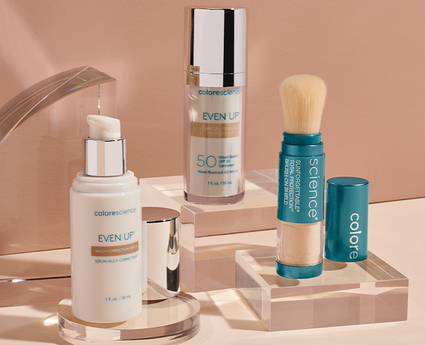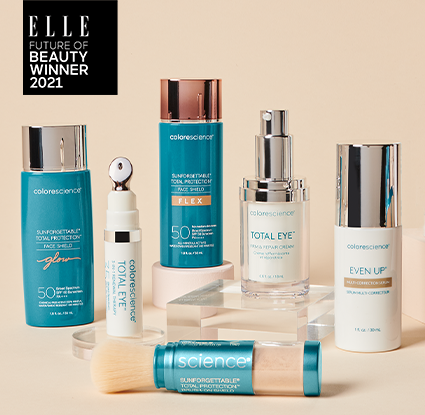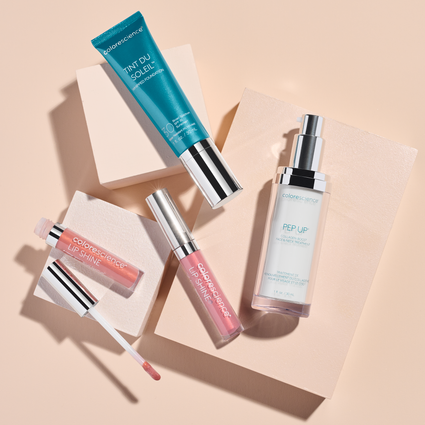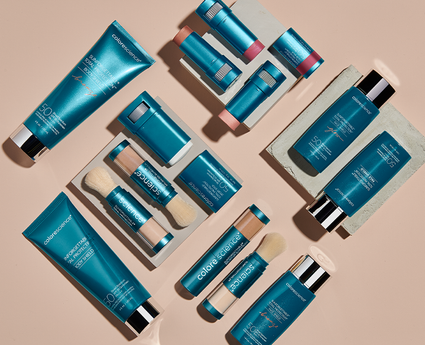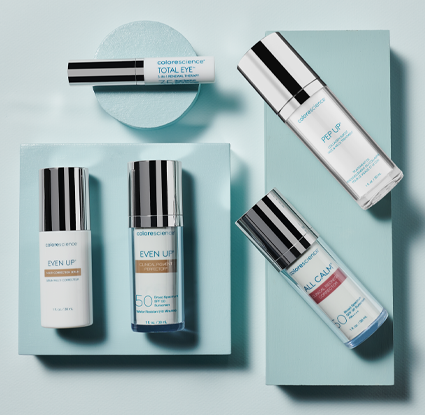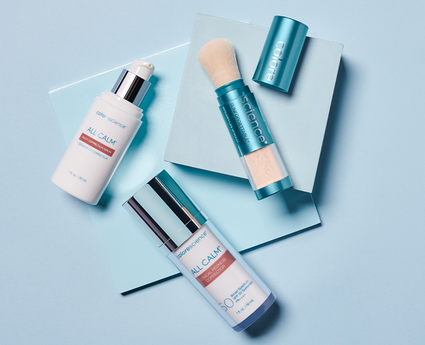The Best Body Care Routine for Healthy Skin
Many people struggle with finding the right products and methods to keep their skin healthy and looking its best. Maybe you’re dealing with breakouts on your body, dry skin patches on your knees and elbows, or other skin issues that make you feel self-conscious.
A quality full-body skincare routine can help you address these problems and prevent them from getting worse. It can also improve your skin’s appearance, texture, and elasticity over time. By following a few simple steps, you can achieve smooth, soft, and glowing skin all over your body.
Use the links below or keep reading to dive into our guide on how to establish a body care routine that will improve your skin’s health and appearance.
- How to Start a Body Care Routine in 4 Steps
- Planning Your Skin Care Routine
- The Importance of Having a Body Care Routine
- Our Favorite Additions to Your Full-Body Skincare Routine
How to Start a Body Care Routine in 4 Steps

Before getting into the details, you can sum up a simple yet effective body care routine in four steps:
- Scrub
- Cleanse
- Moisturize
- Protect
These steps are essential for keeping your skin clean, hydrated, and shielded from harmful environmental factors. Here is a look at these four steps in more detail to help you figure out a basic body care routine specifically for you and your skin.
1. Scrub
The first step of a body care routine is to treat your skin with a scrub or an exfoliator. This helps remove dead skin cells, dirt, oil, and impurities that can clog your pores and cause breakouts.
Exfoliation also improves blood circulation and stimulates collagen production, which can make your skin firmer and more radiant. If you experience dry patches or have bumpy skin, then a scrub can work quite well for you.
You don’t need to scrub your skin every day, as this can be too harsh and irritating. Depending on your skin type and sensitivity, you can scrub your skin once or twice a week.
Pay special attention to areas like your knees, elbows, and heels, as they tend to have a rougher or thicker consistency and experience dryness more so than the rest of your body.
2. Cleanse
Cleanse your body with a gentle cleanser that suits your skin type. This helps wash away any residue left by the scrub and prepares your skin for the next step.
Cleansing also helps to remove:
- Additional dirt
- Sweat
- Oil
- Bacteria
- Other impurities
You can also help balance your skin’s pH level and prevent infections with cleansing.

To cleanse your skin properly, use lukewarm water to open your pores and rinse off the scrub. Then, apply a small amount of cleanser to your hands or a washcloth and massage it all over your body in circular motions. Look for a mild wash free of harsh chemicals and sulfates.
Pay special attention to areas that are prone to sweat and dirt buildup, such as your:
- Neck
- Underarms
- Chest
- Back
- Groin
After cleansing, rinse off the product with cold water to close your pores and pat your skin dry with a soft towel. Avoid rubbing your skin harshly with towels, as this can cause irritation and inflammation.
3. Moisturize
Moisturize your skin with a hydrating lotion or cream that matches your skin type. This helps lock in moisture and prevent:
- Dryness
- Flaking
- Cracking
- Itching
Moisturizing also helps nourish your skin with vitamins, antioxidants, and other beneficial ingredients that can improve its health and appearance. In this way, moisturizing will help you maintain a healthy skin barrier.
To moisturize your skin effectively, apply the product while your skin is still slightly damp but not completely wet or dry. This helps the product absorb better into your skin and create a protective barrier against moisture loss.
Use enough product to cover your entire body without leaving a greasy or sticky feeling.
When choosing a moisturizer, go for one that’s appropriate for your skin type. For example, people with dry skin may want to look for a moisturizer that is rich in emollients, while people with oily skin may want a moisturizer that is oil-free.
4. Protect
Lastly, protect your skin from sun damage by applying sunscreen with SPF 30 or higher. Sunscreen helps to prevent premature aging, wrinkles, sagging, dark spots, and skin cancer caused by exposure to the sun’s harmful rays.
To protect your skin adequately, apply sunscreen evenly over your entire body before leaving the house and reapply every two hours or more frequently–every 40 to 80 minutes–if you’re sweating a lot or swimming.
You’ll want a sunscreen that offers broad-spectrum protection against both UVA and UVB rays. Mineral sunscreen is typically gentler on sensitive skin and less likely to clog pores than chemical-based ones.
And don’t forget your facial skin care, too. Consider the skin cycling trend to keep your skin healthy and glowing.
Planning Your Skin Care Routine
You can customize the above body care routine to suit your needs. To that end, some things to consider when planning your skincare routine for your body include:
- Skin type
- Skin concerns
- Lifestyle
- Budget
- Preferences
Knowing your skin type and addressing your skin concerns hold the most weight when it comes to developing the best body skincare routine that will work for you long-term.

Know Your Skin Type
One of the most important things to know when planning your skincare routine is your skin type. Your skin type is determined by how much oil your skin produces, how sensitive it is, and how prone it is to certain conditions.
The main skin types include:
- Normal skin - balanced, neither too oily nor too dry, and has few or no imperfections.
- Oily skin - produces excess oil, especially in the T-zone (forehead, nose, and chin), and often experiences enlarged pores, blackheads, and acne.
- Dry skin - lacks moisture, feels tight and rough, and may have fine lines, flakes, and cracks.
- Combination skin - a mix of oily and dry, with some areas being more oily or dry than others.
- Sensitive skin - easily irritated by products, environmental factors, or other triggers and has redness, itching, burning, or inflammation.
Knowing your skin type helps you choose the right products and methods for your body skincare routine. For example, those with highly sensitive skin may need to limit exfoliation to once or twice a week and use something gentle like a sugar scrub instead of a salt scrub.
Dry skin may need to focus more on moisturizing and hydrating ingredients. When choosing a moisturizer, go for a thicker cream rather than a lightweight lotion.

Consider Your Skin Concerns
Another thing to consider when planning your body care routine is your skin concerns. These are the specific issues you want to address or prevent with your skincare routine for your body. Some skin concerns can include things like:
- Dryness
- Dullness
- Hyperpigmentation
- Wrinkles
- Breakouts
- Ingrown hairs
- Keratosis pilaris (strawberry skin)
- Eczema
- Psoriasis
- Rosacea
Depending on your skin concerns, you may need to add additional steps or specialized products to your body care routine.
For example, if you have dry hands and feet, you may want to use a hand and foot cream designed to deeply moisturize and heal these areas. If you have keratosis pilaris, you might opt for a product that contains salicylic acid or glycolic acid to exfoliate and smooth the bumps.
Keep in mind that skin conditions may evolve, so your skincare routine may need to adapt every so often as well.
The Importance of Having a Body Care Routine
Your skin, the largest organ of your body, performs many vital functions:
- Regulating body temperature
- Protection from infections and injuries
- Sensing touch, pain, heat, and cold
- Synthesizing vitamin D
- Eliminating toxins and waste
In order to do this, your skin needs to be clean, hydrated, nourished, and protected. A body care routine helps you achieve these goals by removing impurities, replenishing moisture, delivering nutrients, and shielding from damage.

A body care routine can also have benefits for your appearance and well-being:
- Improves skin texture and elasticity
- Enhances skin’s natural glow and radiance
- Reduces signs of aging, such as wrinkles and sagging
- Prevents or treats various skin conditions, such as acne and eczema
- Boosts confidence and self-esteem
You can also make your body care routine a relaxing and enjoyable experience by using products that smell good, feel good, and work well for your skin.
Our Favorite Additions to Your Full-Body Skincare Routine
Colorescience offers a variety of body care products that can help you to achieve healthy, glowing skin. Here are some of our favorites.
Sunscreen
Use a lightweight, liquid, mineral sunscreen that blends effortlessly. This duo–Sunforgettable Total Protection Body Shield SPF 50 and Sunforgettable Total Protection Body Shield SPF 50–are made with hydrating ingredients and nutrients to nourish your skin.
Pep Up® Collagen Boost Face & Neck Treatment
This multitasking serum helps:
- Boost collagen production
- Reduce the appearance of fine lines and wrinkles
- Improve skin tone and texture
- Hydrate the skin.
Use Pep Up® Collagen Boost Face & Neck Treatment on other areas of the body that need extra care, such as the chest, hands, and arms.
All Calm® Multi-Correction Serum
This soothing serum helps calm inflammation, redness, and irritation caused by environmental stressors, such as pollution, heat, cold, and wind.
It also helps:
- Repair and protect your skin barrier
- Balance the skin’s pH level
- Hydrate the skin
Use All Calm® Multi-Correction Serum as a spot treatment for areas that are more prone to inflammation, such as the cheeks, nose, chin, and ears.
These products are all safe for sensitive skin and non-comedogenic, meaning they don't clog your pores.
Keep Your Skin Soft & Glowing
By following a body care routine, you can keep your skin soft and glowing all year long. A well-rounded body care routine is essential for maintaining healthy, glowing skin from head to toe.
Colorescience offers a variety of skin treatments that can help you target a variety of conditions. Our products are safe for sensitive skin, non-comedogenic, and free of harsh chemicals. Shop our sunscreen and skincare to revitalize your routine.

